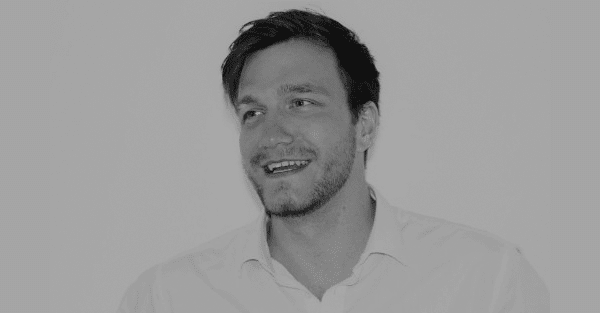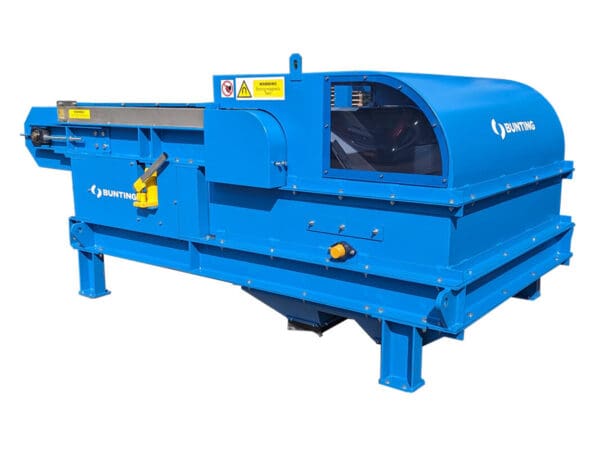
HotSeat – Nathaniel Head, Head of Business Development at Scaled
Established in 2015, Scaled provides its customers with access to truly large-scale 3D printing, enabling them to think big, accelerate innovation and lower costs. Primarily serving the transportation sector, the Swindon-based team has over 15 years of experience in 3D printing and engineering. Nathaniel Head, Head of Business Development, is next to face the HotSeat…
What trends do you think will shape the future of UK plastics? How will Scaled respond?
I think I’m probably going to say the same thing that everyone has been saying over the past couple of years: that the industry is moving rapidly towards environmentally responsible production and sustainability. Scaled has it as one of our core aims to be carbon negative in our operations (actually carbon negative, as opposed to paying for credits!). This means generating less carbon than we use, and to that end, one of our initiatives is to use recycled plastics in our printing as often as possible. We have several awesome material suppliers who are constantly developing new sustainable materials for us to test out on our printers. We find that clients are eager to make use of sustainably produced materials if they can. We have a slightly privileged position in the sense that we get in early with client projects and, therefore, can guide them on which materials to use. We tend to try to avoid projects where designs and materials are locked in from the start. If you can design around additive manufacturing and sustainability at the beginning of a project, there is a whole heap of value that you can unlock that you otherwise might miss out on.
How has Scaled developed during your tenure?
Scaled have gone from strength to strength over the two years I have been with them. We are a small team, but I can honestly say the guys are some of the most accomplished engineers I’ve ever met. They built our three large-scale printing systems from the ground up, and have developed them over the last couple of years to the point where we can now operate almost entirely continuous, lights-out production of parts up to 3 metres in length. This has been exemplified in a year-long project, (which I’m afraid I can’t talk too much about, but the results of which you may see on television some time in October!), where we have printed two-thousand 1m long parts, the equivalent of 2km worth of sustainably sourced plastic. We have also characterised many different materials for printing, such as carbon-fibre filled nylon, glass-filled PPS, ABS and PETG, among others. If the material exists in the plastics industry, we can have a good go at printing it! The technology had come on to such a degree within only a year that we were able to use the COVID lockdowns at the end of 2020, a matter of around three months, to conceptualise, build and test-drive Europe’s first 3D printed vehicle and the fastest in the world. So if anyone would like to explore the concept of a 3D-printed, electric last-mile delivery and utility vehicle platform, or just see one in action, let us know!
What do you credit as the key to your success?
As I mentioned above, the team I work with is phenomenal. There aren’t many problems you can’t solve when you are surrounded by good people to bounce ideas off of.
What has been the greatest challenge in your career?
I could be boring and say COVID, but many people have had greater challenges there, so it feels like a bit of a cop-out! One significant challenge with AM specifically is the inertia that faces the industry and processes. Not only do we face some resistance to change from people who have always used other methods of manufacture, but due to the explosion in popularity in the media and elsewhere of desktop 3D printing, there is a mindset of “you can 3D print anything”, where people take a component that has been designed for other processes and expect to be able to print it successfully first-time. This is very rarely the case. There needs to be a lot of careful consideration put into designs before printing them in order to fully harness the benefits of the technology. Overcoming these hurdles has been a career-long challenge, and I imagine will continue to be one, but it is rewarding being able to guide and help clients to realise the benefits of AM – whether that be in cost-reduction, time-savings, strength and lightweighting, or just being able to solve problems that were previously thought to be too complex to overcome.
What advice do you wish you’d had on entering the industry, and does that differ from the advice you would give to an apprentice joining now?
After I got my degree in engineering, I went directly into a technical sales role. Whilst I think the commercial experience and business insights that you get in a sales role are invaluable (I was lucky to be working with some great managers for this at my first job), and I would recommend anyone do a year or two in sales for that reason, I think I personally would have benefited from some practical engineering experience beforehand. Everything I have learned since then has been on-the-job and in my spare time, and just having that practical foundation would have probably eased some of the pressure I felt in the early days as a fresh-faced graduate, trying to keep up with industry veterans on topics I’d only ever read about! So I would advise myself to get some practical experience before going into the commercial side, but I would definitely advise new apprentices to think about trying out a more customer-facing commercial role as part of their development. Something like applications engineering is a great role for this, as it combines the practical and commercial. Understanding both the technical requirements of a customer and the business decisions that are driving change is a key skill within many roles at a company.
What hidden talents do you have?
I have 2-year-old twins, and we have recently discovered the secret to blowing bubbles bigger than my head. Could that be considered a talent? I suppose just keeping them both entertained for longer than 5 minutes may also be one!
Considering a new way to manufacture a product? Envisioning a new manufacturing process? Visit scal3d.com to find out more about the company, applications and capabilities. Alternatively, connect with Nathaniel Head on LinkedIn to discover how Scaled can help.
Scaled
01793 870181
Website
Email






